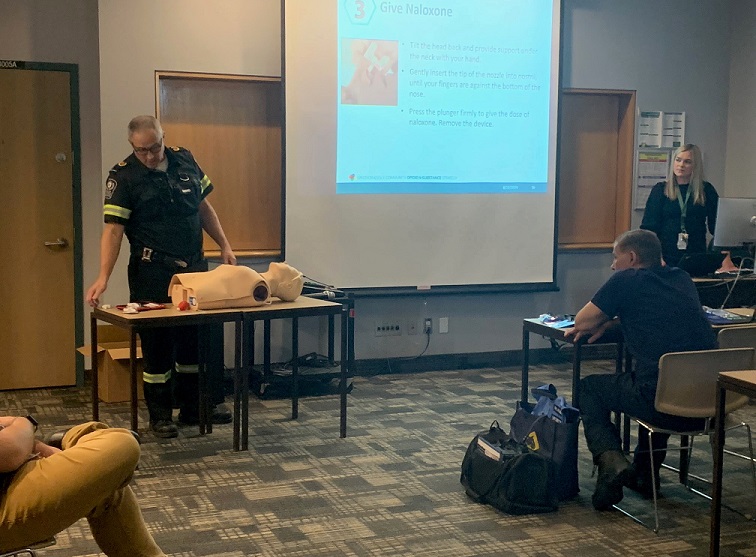The Downtown Windsor Business Improvement Association and the Windsor Essex County Health unit teamed up to host a pair of sessions Wednesday focused on naloxone.
Naloxone is a fast-acting drug used to temporarily reverse the effects of opioid overdoses, which can restore breathing within two to five minutes.
The training sessions involved essential life-saving skills where attendees learned how to identify the signs of an opioid overdose and administer naloxone effectively.
The sessions were held downtown at the St. Clair Centre for the Arts.
People were able to receive training from professionals at the Windsor-Essex Community Opioid and Substance Strategy (WECOSS) and Substance Supports in Neighbourhoods Accessed through Police Partnerships (SSNAPP) which included members from Essex Windsor EMS.
Jennifer Bradt, Manager of Chronic Disease and Injury Prevention at WECHU, says this event followed four previous events held earlier this year.
Bradt says it's very important that more and more people are aware of this kind of training.
"Generally there's been an increase in opioid overdoses within our community, so it's really important to just have kits out there and available. To increase confidence and capacity for community members to actually go out and administer naloxone, and feel confident about doing that," she said.
She says unfortunately there are more and more opioid overdoses happening, evidenced by the string of alerts sent in succession earlier this summer.
"It was a trend that was just increasing, it's really not anything that has changed, it's been increasing over the years. And it's not something we're just seeing in Windsor-Essex, this is throughout the province so really providing naloxone training is one part of a larger strategy."
Downtown resident Janet Magrum was one of those in attendance, who says she wanted to learn more because she sees a lot of needle use in her neighbourhood.
"I live a house away from one of the main corridors of needle use. I sit outside the front of my house a lot, and I've had several visitors where I took my phone out and they'd say 'don't call, don't call!' And basically I was looking for symptoms of what was going to happen next."
Magrum says it's a scary thing to see someone overdosing, and she wanted to know more about the whole process.
"Not just the stab and I know there will be additional information. I can't say I feel safer, but I'll feel better prepared to live in the neighbourhood I live in," she said.
The presentation laid out the five step plan for dealing with a suspected overdose: first shake and shout, then call 9-1-1, then administer the naloxone, then administer CPR, and finally check to see if it's working before EMS arrive.
Organizers say business owners and residents can play a proactive role in making the community safer by being prepared to respond to opioid overdoses.
Every attendee on Wednesday receives a naloxone kit to take with them as well.
